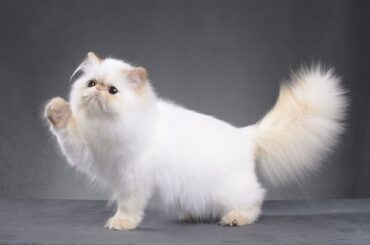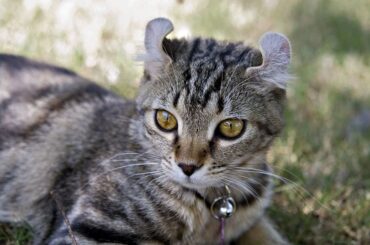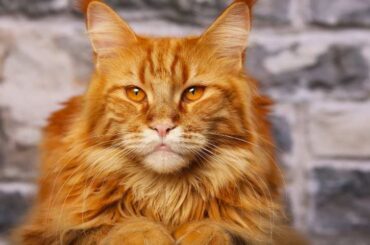In the early 1980s, the Nebelung Cat Breed was created. When a black shorthaired female cat and her black longhaired Angora-type suitor had three kittens. One of the shorthaired black female kittens was given to the son of Denver computer programmer Cora Cobb, who called her Elsa. Elsa had her first litter in August 1984, with the help of a shorthaired Russian Blue-type tomcat.
Because Elsa’s brood of six includes one stunning longhaired solid blue male, both she and her blue-haired boyfriend must have possessed the recessive gene for long hair. Cora Cobb named the cat Siegfried after the hero of her favorite Wagner opera.
Cobb obtained Elsa’s next litter, which was fathered by the same Russian Blue-type tom and produced a magnificent longhaired female kitten with many of Siegfried’s charming qualities, and named her Brunhilde, after the heroine in Wagner’s opera.
Siegfried (1984) and Brunhilde (1985) provided the American foundation for this cat breed (1985). Siegfried and Brunhilde’s owner, Cora Cobb, was blown away by the beauty of her blue-grey cats. Siegfried and Brunhilde wore semi-long coats like a Russian Blue.

The breed is best described as semi-long-haired Russian Blue, according to Solveig Pfleuger the geneticist. Cobb, with the help of Pfleuger, created a breeding standard based on the Russian Blue, but with one exception: the coat length.
The International Cat Association (TICARussian )’s Blue breeders objected, and the breed standard was altered to identify a unique breed that resembled blue-grey cats imported from Russia in the nineteenth and early twentieth centuries. Cobb named the breed the Nebelung, which is a German word that approximately translates to “creatures of the mist,” a fitting name for a cat that suddenly vanishes when people come to visit.
Cobb based Nebelung’s standard on the Russian Blue’s virtually word for word, with the exception of the coat length and the general introductory description. In September 1987, TICA approved the Nebelung for registration.
Table of Contents
Body characteristics
- A long, graceful neck and body, long legs, a long or medium coat, and a long tail distinguish Nebelung Cat Breed. Green eyes, slightly oval in shape, are bright green or yellow-green in color.
- A modified wedge-shaped head with pointed rather than rounded ears sits atop a large, pointed head.
- Overall, the cat has the impression of a long, strong, well-muscled cat.
- Behind the ears and between the toes are fur tufts, and the hind legs have pantaloons.
- Female Nebelungs weigh 3.5 kilograms, while sterile males weigh 6.5 kg.
- The soft double coat is delicate and silky, and it is gray in hue with silver tips.
- A ruff around the neck is worn by males and, to a lesser extent, females.
- The tail has longer fur than the rest of the body.
Behavior
Nebelung cats are energetic, playful, affectionate, friendly, and intellectual. The breed’s mild-mannered demeanor and behavior may not often represent the breed’s relatively high degree of intelligence. Despite being an energetic cat, it may thrive in an indoor environment. Nebelungs like to spend time with their own family and avoid interacting with strangers.
They form close bonds with a few humans and remain affectionate and committed to them for the rest of their life. It is, nevertheless, a cat that enjoys the companionship of its owners or other cats. Nebelungs are good communicators who will continually tell their masters of issues.

In general, Nebelungs are wary of strangers, ranging from hiding under the bed to attentively scrutinizing newcomers from a safe distance. They are playful and affectionate. They create strong relationships of affection and trust with their human companions, remaining devoted and loyal throughout their lives.
Nebelungs are intelligent, active, and friendly animals who follow their favorite humans from room to room to keep an eye on the action. Sit down, and your lap will be rapidly filled with silky smooth fur; they enjoy sitting near or in the laps of their selected humans to be petted and pampered. They form close bonds with a few individuals and remain loyal and affectionate throughout their lives.
Caring
This is a cat who likes consistency and may take some time to acclimate to changes in the home. It can benefit from early socialization in order to become more adaptive. They’re known for being peaceful and undemanding, yet they can also be mischievous. To keep them stimulated, exercised, and entertained, make sure you have enough appropriate toys and other sources of enrichment around the house.

The lengthy, double coat of the Nebelungs might take up to two years to fully develop. They don’t shed a lot, but their coat will need to be groomed on a weekly basis to avoid becoming matted or tangled.
Health
Nebelungs have not had the opportunity to develop many genetic disorders because they are a new breed. This indicates that they are generally healthy. Give them the right proportion of diets in order to avoid obesity.
RECOMMENDED ARTICLES
- Munchkin Cat Breed- Characteristics, Behaviour And Health
- Napoleon Cat Breed- Characteristics, Caring And Health
- Anaphylaxis In Cats- Causes, Symptoms And Treatment
- Osteomyelitis In Cats – 8 Causes, Symptoms And an Amazing Treatment Plan




